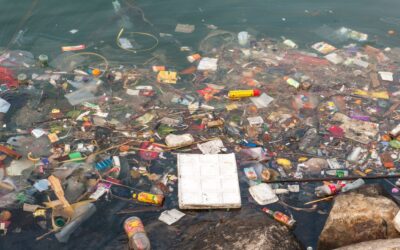The United Nations 2023 Water Conference took place from 22-24 March in New York focusing mainly on SDG 6: Clean Water and Sanitation for All. A historical event, as it was the first UN Water Conference held after almost half a century. It’s been considered a watershed moment highlighting an urgent message: “our progress on water related goals and targets remains alarmingly off track, threatening the entire sustainable development agenda.”
The Great Bubble Barrier team was pleased to attend the UN 2023 Water Conference to connect with key policy makers to discuss ways to accelerate the goal of clean water for all. What is apparent, is that the challenges are immense, and time isn’t on our side. UN Secretary General António Guterres made this crystal clear through his opening words:
“Water is a human right. The common development denominator to shape a better future. But water is in deep trouble. [..] We’ve broken the water cycle, destroyed ecosystems and contaminated groundwater. 1 in 4 people lives without safely managed water systems or clean drinking water. [..] This is more than a conference on water. This conference must present the quantum leap in the capacity of member states and the international community to recognise and act upon the vital importance of water on our world’s sustainability and as a tool to foster peace and international cooperation.”
Our team was involved in a variety of events and came back with a very clear focus on what needs to be done to contribute to cleaner water. These are our main take-aways from the United Nations 2023 Water Conference:
Stewardship of waterways and their pollution
Who is in charge?
Who should be in charge of the pollution running through waters and seas? When it comes to plastic pollution specifically, ownership of the problem remains a blurry subject. We all agree on the need for clean water, but it’s not always clear who should take responsibility to clean it. We see this pattern occurring often when it comes to implementing solutions (technology, policy or otherwise) that tackle issues around global natural resources.
We need a champion
The conclusion from multiple discussions around restorative measures or technology was that the best solution is the one that best considers the needs from all groups related to that specific waterway. But in order to start the process, one group needs to step forward as a champion. Both big corporations and SMEs bump into the same challenges while finding a champion for local projects that have a big impact. It almost seems as if every party involved is waiting for another to step up. UN-Water chair and Director General of ILO Mr Gilbert F. Houngbo concluded the conference stating:
“Water is and shall remain everyone’s business. The conference demonstrated the importance of cooperation across sectors, stakeholders and borders.”
Solutions exist, but how do we proceed?
The water crisis we face is a crisis where a variety of solutions already exist. However, implementing those solutions through all the red tape is taking more time than we can afford. We need to pick up speed to define the best approach and ramp up.
Industry involvement in clean water
The topic of clean water is too big and complex to just be addressed by governments alone.That’s why it’s vital we look at the role industries have when it comes to clean water. The private sector is by far the biggest user of clean water, but at the same time industries play a large role in polluting waterways in the first place. Needless to say we need to bring industry together to take responsibility for cleaner water. The cost of inaction is simply higher than action. As General Assembly President Csaba Kőrösi put it:
“Civil society and the private sector are at the heart of this transformation, they are ‘the key to our success’. They must be part of more inclusive partnerships and solutions.”
Listen to the voices of local communities
The SDG 6 goals clearly state: Clean Water and Sanitation for All. That means action and solutions to be taken to get your water cleaned have to be accessible to all as well. The voices of local communities can’t be underestimated. When ‘engagement of local communities’ is put forward as a possible solution, we have to realise that we need to work hard to ensure it will become a real tool for participation. Only by co-creating solutions that are based on a holistic approach to the multiple uses of water, tailored to communities’ local needs, will we be able to ensure no one is left behind. And not only when referring to people, but also to the aquatic ecosystems themselves, whose rights as such should be protected.
Steps forward
The Water Action Agenda was one of the key outcomes of the Water Conference, capturing over 700 commitments totaling $300 billion USD in pledges made to transform a global water crisis to a water-secure world. See all commitments made by governments, businesses, multilateral banks, and civil society.
Secretary-General António Guterres’ closing remarks captured a hopeful message:
“The commitments at this Conference will propel humanity towards the water-secure future every person on the planet needs.”
Water needs to continue being at the centre of the global political agenda. Each of us has to take responsibility for the role we play in society and the role we can play in accelerating clean water. Not only individually, also within our personal and professional networks.
Whether you’re a government, local community or private organisation: see how you can take action to clean your local river.




